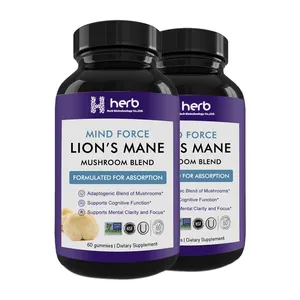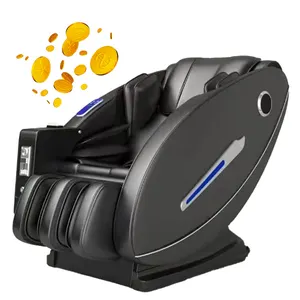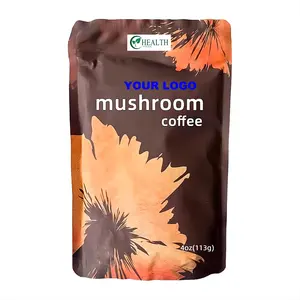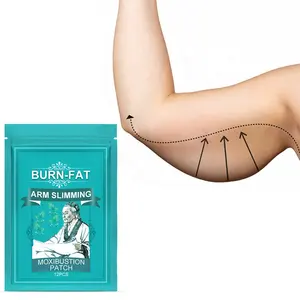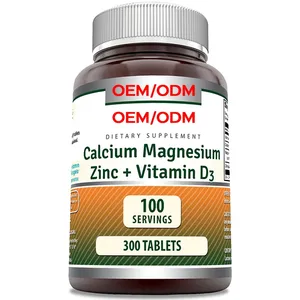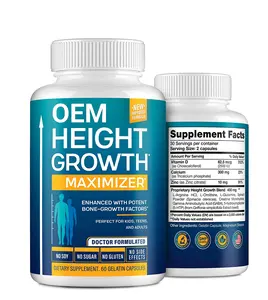Phổ biến trong ngành của bạn






Bán Sỉ Miếng Đệm Anion Loại B Hình Hoa Sen Tuyết Miếng Vệ Sinh Cho Nữ Băng Vệ Sinh Than Tre Cho Kenya
0,02 US$ - 0,03 US$
Đơn hàng tối thiểu: 2 Cái
Vận chuyển mỗi chiếc: 10.000,00 US$







Người Phụ Nữ Phân Hủy Sinh Học Tre Rganic Anion Bông Vệ Sinh Khăn Ăn Miếng Đệm Cho Kinh Nguyệt

0,02 US$ - 0,04 US$
Đơn hàng tối thiểu: 10000 Cái
Vận chuyển mỗi chiếc: 0,75 US$



Bán Buôn Jeunesse Anion Vệ Sinh Khăn Ăn Kinh Nguyệt Pads Vệ Sinh Khăn Ăn Pads Vệ Sinh Pads
0,01 US$ - 0,02 US$
Đơn hàng tối thiểu: 100000 Cái



Miếng Bông Cao Cấp Dùng Cho Mặt-Miếng Tẩy Trang Mặt, Không Gây Dị Ứng, Không Xơ | 100% Cotton Nguyên Chất
0,35 US$ - 0,39 US$
Đơn hàng tối thiểu: 500 Túi



100% Thảo Dược Âm Đạo Sạch Detox Ngọc Trai Yoni Thắt Chặt Detox Ngọc Trai Làm Sạch Băng Vệ Sinh Yoni Ngọc Trai
Sẵn sàng vận chuyển
0,22 US$ - 0,35 US$
Đơn hàng tối thiểu: 100 Cái
Vận chuyển mỗi chiếc: 0,39 US$







Phụ Nữ Vệ Sinh Vệ Sinh Lady Sản Phẩm Chăm Sóc Anion SAP Vệ Sinh Khăn Ăn 9 Lớp Thấm Vệ Sinh Pads
0,06 US$
Đơn hàng tối thiểu: 2 Cái
Vận chuyển mỗi chiếc: 53,07 US$


Lady Miễn Phí Mới Nhất Nữ Tính Sản Phẩm Vệ Sinh Hữu Cơ Ladies Anion Vệ Sinh Pad
0,01 US$ - 0,03 US$
Đơn hàng tối thiểu: 300000 Cái




Sản Phẩm Vệ Sinh Phụ Nữ Ladies Day Sử Dụng Dùng Một Lần Breathable Winged Niceday Winged Anion Vệ Sinh Pads/Vải Vệ Sinh Khăn Ăn
Sẵn sàng vận chuyển
0,05 US$
Đơn hàng tối thiểu: 2 Cái
Vận chuyển mỗi chiếc: 15,98 US$






Bán Buôn Sản Phẩm Vệ Sinh Phụ Nữ Anion Vệ Sinh Khăn Ăn Phụ Nữ Kinh Nguyệt Vệ Sinh Pads Nhà Sản Xuất
0,03 US$
Đơn hàng tối thiểu: 2 Túi
Vận chuyển mỗi chiếc: 15,00 US$






Giá Rẻ Giá Phụ Nữ Vệ Sinh Pad Phụ Nữ Vệ Sinh Khăn Ăn Anion Thảo Dược Sản Phẩm Vệ Sinh Miếng Đệm Hữu Cơ

0,02 US$ - 0,03 US$
Đơn hàng tối thiểu: 200000 Cái
Vận chuyển mỗi chiếc: 0,46 US$






Phụ Nữ Vệ Sinh Khăn Vệ Sinh Phụ Nữ Sản Phẩm Bán Buôn Anion Vệ Sinh Pad
0,45 US$ - 0,50 US$
Đơn hàng tối thiểu: 10000 Gói





Miếng Vệ Sinh Hữu Cơ Có Thể Phân Hủy 100 Miếng Lót Nữ Sản Phẩm Bền Vững Anion Sản Phẩm Vệ Sinh Nữ Hộp Hữu Cơ
Sẵn sàng vận chuyển
0,02 US$ - 0,05 US$
Đơn hàng tối thiểu: 100000 Cái
Vận chuyển mỗi chiếc: 5,47 US$
Các tìm kiếm liên quan:
miếng anion dùng một lầnmiếng anion phụ nữ nhật bảnmiếng anion phụ nữ thường xuyênlàm thế nào để vứt bỏ miếng đệmmiếng đệm mỏng trong thời gianmiếng đệm anion cho nữmiếng đệm anion nữanion miếng giámiếng đệm maxi sau sinhmiếng đệm vệ sinh nữ khô240mm lady anion miếng đệmmiếng đệm anionmiếng đệm chống trượtnhà cung cấp miếng đệm thuốcbấm ngay lập tức để miếng đệm nhiệt






Nhãn hiệu riêng của chúng tôi sản phẩm vệ sinh phụ nữ kinh nguyệt Pad 180mm Anion vệ sinh khăn ăn vệ sinh phụ nữ nhà máy
0,26 US$ - 0,32 US$
Đơn hàng tối thiểu: 50000 Cái






Bán Buôn Phụ Nữ Sản Phẩm Vệ Sinh 2024 Thời Kỳ Miếng Đệm Màu Hồng Anion Vệ Sinh Khăn Ăn Sợi Tre Bề Mặt Vệ Sinh Miếng Đệm
0,04 US$
Đơn hàng tối thiểu: 100 Cái
Vận chuyển mỗi chiếc: 0,69 US$



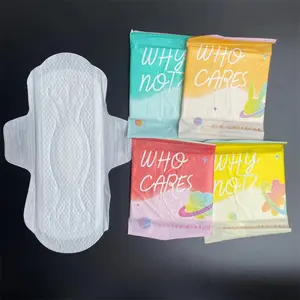


Bán Buôn Dùng Một Lần Sản Phẩm Vệ Sinh Siêu Mỏng Anion Kinh Nguyệt Pads Nhãn Hiệu Riêng Sanitry Khăn Ăn Pad Vệ Sinh Phụ Nữ
Sẵn sàng vận chuyển
1,96 US$
Đơn hàng tối thiểu: 24 Túi
Vận chuyển mỗi chiếc: 1,01 US$






Sản Phẩm Vệ Sinh Phụ Nữ Không Cánh Bán Sỉ Quần Lót Anion Băng Vệ Sinh Hàng Ngày Dùng Một Lần
0,026 US$ - 0,031 US$
Đơn hàng tối thiểu: 10000 Cái






Sản Phẩm Vệ Sinh Dùng Một Lần Anion Băng Vệ Sinh Phụ Nữ Băng Vệ Sinh Phụ Nữ Băng Vệ Sinh Mẫu Miễn Phí
0,02 US$ - 0,03 US$
Đơn hàng tối thiểu: 200000 Cái






ODM/OEM Thoáng Khí Phụ Nữ Chăm Sóc Vệ Sinh Sản Phẩm Có Cánh Hình Dạng Vệ Sinh Khăn Ăn Dùng Một Lần Tiêu Cực Anion Chip Vệ Sinh Miếng Đệm Trong Kho
0,02 US$ - 0,04 US$
Đơn hàng tối thiểu: 10000 Cái
Vận chuyển mỗi chiếc: 0,55 US$






Thân thiện với môi hữu cơ tre vệ sinh khăn ăn vệ sinh phụ nữ vệ sinh sản phẩm Anion Bông vệ sinh Pad

0,03 US$ - 0,04 US$
Đơn hàng tối thiểu: 200000 Cái






Feminine Vệ Sinh Sản Phẩm Vứt Bỏ Pads Lady Anion Vệ Sinh Khăn Ăn Thương Hiệu Người Mua Trực Tiếp Mua Từ Trung Quốc
0,02 US$ - 0,03 US$
Đơn hàng tối thiểu: 450000 Cái






Sản Phẩm Vệ Sinh Phụ Nữ Băng Vệ Sinh Chăm Sóc Phụ Nữ Thường Xuyên Anion Kinh Nguyệt Pads Thương Hiệu Bán Buôn
0,0265 US$ - 0,0357 US$
Đơn hàng tối thiểu: 200000 Cái












Miếng Lót Nữ Tính Dùng Một Lần Khăn Vệ Sinh Anion Sản Phẩm Vệ Sinh Phụ Nữ Bằng Cotton Hữu Cơ Bán Sỉ Nhãn Hiệu Riêng Băng Vệ Sinh
0,02 US$ - 0,03 US$
Đơn hàng tối thiểu: 150000 Cái






Oem 425 mét tiêu cực Anion chip vệ sinh phụ nữ Sản phẩm sử dụng ban đêm phụ nữ Băng vệ sinh
Sẵn sàng vận chuyển
0,80 US$ - 1,50 US$
Đơn hàng tối thiểu: 2 Túi
Vận chuyển mỗi chiếc: 11,90 US$






Thời Gian Vệ Sinh Kinh Nguyệt Phụ Nữ Vệ Sinh Pad Sản Phẩm 300Mm Thoải Mái Anion Chip Phụ Nữ Dùng Một Lần Vệ Sinh Khăn Ăn
0,03 US$ - 0,04 US$
Đơn hàng tối thiểu: 200000 Cái






Oem/ODM nhãn hiệu riêng sản phẩm vệ sinh phụ nữ Anion thời kỳ Pads Ladies vệ sinh Pads làm vệ sinh khăn ăn nhà máy
0,02 US$ - 0,05 US$
Đơn hàng tối thiểu: 5000 Cái
Vận chuyển mỗi chiếc: 0,95 US$






Thoáng Khí Anion Băng Vệ Sinh Bán Buôn Nữ Tính Sản Phẩm Vệ Sinh Dùng Một Lần Quần Lót Với Vệ Sinh Pad Retinol Miếng Bông

0,04 US$ - 0,06 US$
Đơn hàng tối thiểu: 20000 Cái
Vận chuyển mỗi chiếc: 0,23 US$






Bán Buôn Vệ Sinh Phụ Nữ Sản Phẩm Dùng Một Lần Vệ Sinh Khăn Ăn Cotton Mềm Mại Anion Tự Nhiên Vệ Sinh Pad
0,04 US$ - 0,05 US$
Đơn hàng tối thiểu: 100000 Cái






Nhà Máy Giá Phụ Nữ Vệ Sinh Miếng Đệm Bông Anion Miếng Đệm Nữ Tính Vệ Sinh Sản Phẩm Kinh Nguyệt Khăn Ăn Panty Bán Buôn
0,01 US$ - 0,03 US$
Đơn hàng tối thiểu: 200000 Cái






Sản Phẩm Vệ Sinh Dùng Một Lần Băng Vệ Sinh Đệm Vệ Sinh Cho Nữ Đệm Kinh Nguyệt Anion Cho Nữ Ở Trung Quốc
Sẵn sàng vận chuyển
0,45 US$ - 0,70 US$
Đơn hàng tối thiểu: 10 Túi
Vận chuyển mỗi chiếc: 1,65 US$






Anion Băng vệ sinh các sản phẩm vệ sinh phụ nữ tốt nhất Trung Quốc bán buôn bạc hà miếng đệm kinh nguyệt
0,05 US$
Đơn hàng tối thiểu: 250000 Cái






Phụ nữ miễn phí mới nhất sản phẩm vệ sinh phụ nữ hữu cơ phụ nữ Anion vệ sinh Pad

0,01 US$ - 0,03 US$
Đơn hàng tối thiểu: 30000 Cái





Bán Sỉ Khăn Vệ Sinh Nữ Sản Phẩm Vệ Sinh Phụ Nữ Băng Vệ Sinh Ion Âm
0,05 US$ - 0,07 US$
Đơn hàng tối thiểu: 2 Cái

Bán Sỉ Giá Kinh Tế Miếng Đệm Kinh Nguyệt Thoáng Khí Bằng Cotton Nguyên Chất Siêu Thấm Sản Phẩm Vệ Sinh Phụ Nữ Băng Vệ Sinh Anion
60,00 US$
Đơn hàng tối thiểu: 20 Gói





Oem và ODM Anion Pads vệ sinh khăn ăn Pads Chất lượng cao vệ sinh cá nhân sản phẩm
0,04 US$ - 0,09 US$
Đơn hàng tối thiểu: 10000 Cái






Băng vệ sinh sản phẩm vệ sinh phụ nữ bông băng vệ sinh sức khỏe
0,03 US$ - 0,05 US$
Đơn hàng tối thiểu: 100000 Cái






Dùng Một Lần Sản Phẩm Vệ Sinh Siêu Hấp Thụ Anion Vệ Sinh Khăn Ăn Kinh Nguyệt Womans Miếng Đệm Vệ Sinh Khăn Phụ Nữ Băng Vệ Sinh
0,08 US$
Đơn hàng tối thiểu: 100000 Cái






Nhãn Hiệu Riêng Anion Thời kỳ Miếng Đệm Phụ Nữ Vệ Sinh Miếng Đệm Phụ Nữ Vệ Sinh Sản Phẩm Vệ Sinh Khăn Ăn OEM Nhà Máy

0,02 US$ - 0,04 US$
Đơn hàng tối thiểu: 10000 Cái
Vận chuyển mỗi chiếc: 0,17 US$






Anion panty Lót cao thấm dùng một lần vệ sinh sản phẩm dưới Pad
0,05 US$ - 0,08 US$
Đơn hàng tối thiểu: 49999 Túi






Bán Buôn Phụ Nữ Sản Phẩm Vệ Sinh Anion Băng Vệ Sinh Phụ Nữ Kinh Nguyệt Băng Vệ Sinh Các Nhà Sản Xuất
0,03 US$
Đơn hàng tối thiểu: 2 Cái
Các danh mục hàng đầu
Giới thiệu về sản phẩm vệ sinh miếng anion
Tìm kiếm sản phẩm vệ sinh miếng anion. trên Alibaba.com và duyệt qua nhiều lựa chọn về các nhà cung cấp tuyệt vời. Tiết kiệm tiền khi dự trữ một thành phần để sử dụng trong một số mặt hàng thực phẩm khác nhau. Phần lớn sản phẩm vệ sinh miếng anion. có dạng bột dễ hòa tan và dễ trộn với các thành phần khác. Sử dụng như một chất thay thế thơm ngon, không chứa caffein cho cà phê hoặc để làm một số loại thuốc thảo dược. Các nhà sản xuất thực phẩm và công ty dược phẩm có thể hưởng lợi từ việc sử dụng thành phần hoàn toàn tự nhiên này.
Tất cả sản phẩm vệ sinh miếng anion. có mức độ tinh khiết rất cao, giúp sản phẩm cuối cùng không có các chất gây ô nhiễm tiềm ẩn. Bột màu trắng giữ được vẻ trung tính khi trộn các thành phần và sẽ không ảnh hưởng đến màu sắc. Các chất chiết xuất sẫm màu hơn cũng có sẵn và có thể mang lại bóng râm bổ sung trong thành phần sản phẩm cuối cùng. Khi uống vào cơ thể, bột inulin có trong sản phẩm có thể có tác dụng lợi khuẩn giúp cải thiện sức khỏe hệ tiêu hóa theo thời gian.
sản phẩm vệ sinh miếng anion được bán trên Alibaba.com tuân thủ các tiêu chuẩn cấp thực phẩm và cấp y tế để đảm bảo an toàn cho khách hàng. Các nhà cung cấp thường sẽ đóng gói sản phẩm trong túi hút chân không để bảo quản độ tươi và chất lượng. Đặc biệt những lô hàng lớn thường được đựng trong thùng phuy dễ vận chuyển. Hầu hết các chất chiết xuất sẽ mang lại thêm hương vị ngọt ngào để tạo cho công thức một hương vị dễ chịu hơn.
Duyệt qua sản phẩm vệ sinh miếng anion. trên Alibaba.com và tận hưởng chi phí thấp của một thành phần chính quan trọng được sử dụng trong các loại dược phẩm và đồ uống tốt cho sức khỏe. Cho dù người tiêu dùng cần cải thiện sức khỏe hệ tiêu hóa hoặc tạo ra đồ uống có hương vị cà phê mà không có caffeine, thì vẫn có rất nhiều lựa chọn có sẵn. Mua sắm xung quanh và tìm các nhà cung cấp tốt nhất có thể giao hàng với bất kỳ số lượng nào cần thiết.
Tất cả sản phẩm vệ sinh miếng anion. có mức độ tinh khiết rất cao, giúp sản phẩm cuối cùng không có các chất gây ô nhiễm tiềm ẩn. Bột màu trắng giữ được vẻ trung tính khi trộn các thành phần và sẽ không ảnh hưởng đến màu sắc. Các chất chiết xuất sẫm màu hơn cũng có sẵn và có thể mang lại bóng râm bổ sung trong thành phần sản phẩm cuối cùng. Khi uống vào cơ thể, bột inulin có trong sản phẩm có thể có tác dụng lợi khuẩn giúp cải thiện sức khỏe hệ tiêu hóa theo thời gian.
sản phẩm vệ sinh miếng anion được bán trên Alibaba.com tuân thủ các tiêu chuẩn cấp thực phẩm và cấp y tế để đảm bảo an toàn cho khách hàng. Các nhà cung cấp thường sẽ đóng gói sản phẩm trong túi hút chân không để bảo quản độ tươi và chất lượng. Đặc biệt những lô hàng lớn thường được đựng trong thùng phuy dễ vận chuyển. Hầu hết các chất chiết xuất sẽ mang lại thêm hương vị ngọt ngào để tạo cho công thức một hương vị dễ chịu hơn.
Duyệt qua sản phẩm vệ sinh miếng anion. trên Alibaba.com và tận hưởng chi phí thấp của một thành phần chính quan trọng được sử dụng trong các loại dược phẩm và đồ uống tốt cho sức khỏe. Cho dù người tiêu dùng cần cải thiện sức khỏe hệ tiêu hóa hoặc tạo ra đồ uống có hương vị cà phê mà không có caffeine, thì vẫn có rất nhiều lựa chọn có sẵn. Mua sắm xung quanh và tìm các nhà cung cấp tốt nhất có thể giao hàng với bất kỳ số lượng nào cần thiết.
